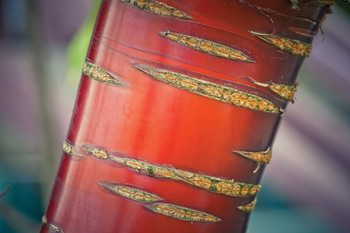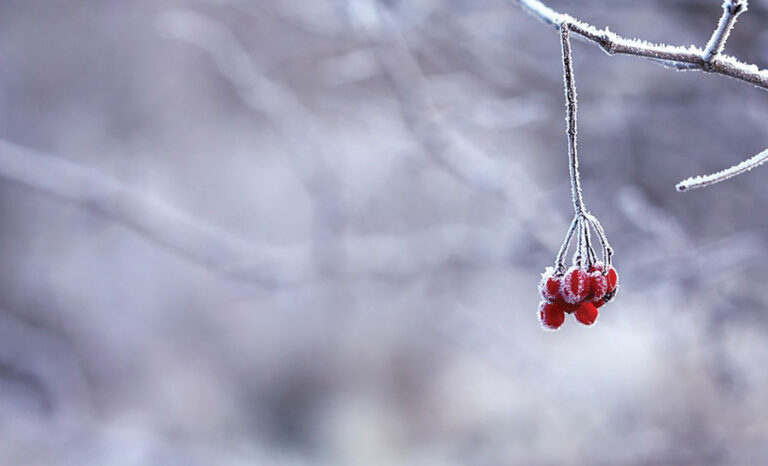The shortest day has passed, a landmark in the calendar that can bring a certain amount of uplifting joy to the month of January. In fact, this is rarely a time of murky mornings. Instead, the weather is more likely to bring visual treats of bright blue skies, together with stunning crisp beauty. It’s all too easy to ignore the glories of the season.
You can, however, relish this time of fireside contemplation. It’s comforting to acknowledge the lack of need for weeding, pruning and mowing. January is a month of gardening downtime and rest. You can enjoy the view of the garden from your cosy home. It’s an ideal month during which to examine the bare bones structure of your outdoor space, making plans of action that can soon be put into place.
Beautiful bloomers and bark
Don’t assume that everything in the soil is dormant. Winters are generally warmer than they used to be and you will find glorious snowdrops, winter aconites, crocuses, tiny irises and even early narcissi. These are plants with short stems, protecting their flowers from chilling winds. Look above the ground level and you’ll be delighted to find winter honeysuckle, Viburnum bodnantense and witch hazel with its spidery flowers, all blooming in January. Don’t miss the chance to indulge in a heavenly intake of sweet fragrance.
 It’s also the very best time of year to appreciate tree bark. You need look no further than the popular cherry family to find one of the best displays imaginable. Prunus serrula, or the ‘birch-barked cherry’, looks as if it is on fire during winter when its horizontally striped, mahogany-red bark shines like a beacon. Notice, also, beautiful members of the silver birch family with stunning white stems. Betula utilis var. jacquemontii and various cultivars provide ghostly, atmospheric charm. Some people actually wash the bark in order to obtain the best display. Not only are birch trees the source for traditional witches’ brooms, but bark oil can be used to treat skin conditions. Furthermore, it is said that betulinic acid, also contained in the bark, might be effective against cancerous cells and HIV.
It’s also the very best time of year to appreciate tree bark. You need look no further than the popular cherry family to find one of the best displays imaginable. Prunus serrula, or the ‘birch-barked cherry’, looks as if it is on fire during winter when its horizontally striped, mahogany-red bark shines like a beacon. Notice, also, beautiful members of the silver birch family with stunning white stems. Betula utilis var. jacquemontii and various cultivars provide ghostly, atmospheric charm. Some people actually wash the bark in order to obtain the best display. Not only are birch trees the source for traditional witches’ brooms, but bark oil can be used to treat skin conditions. Furthermore, it is said that betulinic acid, also contained in the bark, might be effective against cancerous cells and HIV.
Acer griseum, the paperbark maple, is also showing its true splendour this month. The cinnamon-coloured bark peels, or exfoliates, as it grows. The thin, papery layers shed to reveal smooth, orange bark underneath. This winter interest is highlighted at a time of year when there is little undergrowth competing for attention.
Protect tender plants
We all know that January weather can bring snow, heavy frosts, rain, strong winds and very low temperatures. It is not unknown to see the mercury plummet to -10 °C or lower. The borderline tender garden specimens will therefore benefit from protection. It’s often the chilling winds that do the most damage. If you wrap horticultural fleece around their shivering forms, it will help to protect them from serious damage. Should there be snow, it’s helpful to shake it off the limbs of shrubs and trees in order to release the heavy burden. You will notice the shape begins to splay as the boughs bend, and this is the moment to act.
There are few plants than can tolerate vigorous pruning at this point in the year, so leave the matted hydrangeas and fuchsias but turn instead to the tough climbing roses, wisteria and definitely the grape or ornamental vine such as Vitis coignetiae. All new vine growth can be cut back to within two buds of the main woody framework from which it sprouted. You can be pretty ruthless – it will be sprouting again as soon as the sap starts rising.
Longer days
Rumour has it that January 12th is the magical date when the day length becomes noticeably longer and outdoor plants soon recognise the subtle change. Nature’s force is truly remarkable and it seems that however cold above the soil, there are always things happening beneath. If your heart needs lifting, the skies are dull and your SAD lamp is just not doing the trick, step outside and rummage around the borders to find proof of brighter things to come. You will see that most plants are poised ready for action, their buds just awaiting a silent signal before a new dawn. Don’t, however, step on frozen grass if you can avoid it – your footsteps will show up as yellow patches when it thaws and it won’t be ready to grow and repair the damage for some weeks to come.
By Caroline Knight


